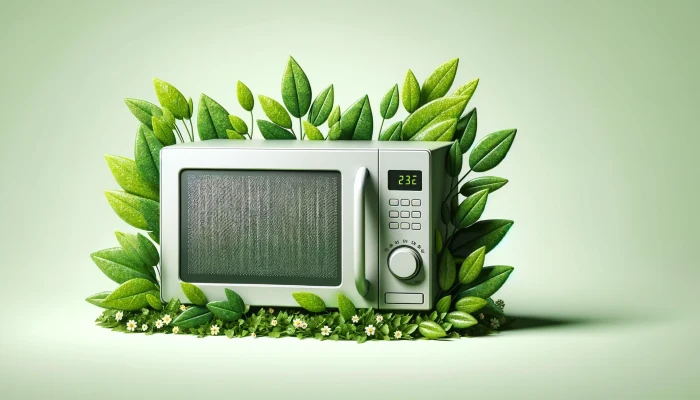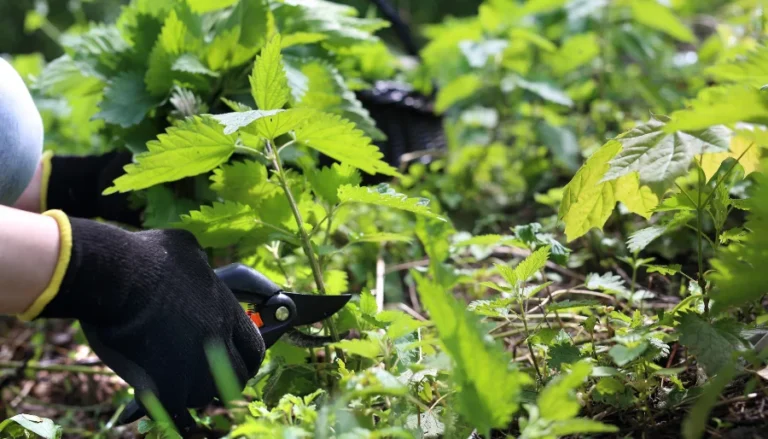Disposing of an old microwave isn’t just about clearing space in your kitchen—it’s a step towards protecting our planet. Microwaves, like all electronic waste, can harm the environment if not handled correctly. They’re not just kitchen appliances; they’re a bundle of metal, plastic, and electronic components that, when dumped recklessly, contribute to pollution and toxic waste issues.
Thankfully, there’s a silver lining.
Whether your microwave has zapped its last meal or you’re upgrading to a new model, several responsible disposal options exist. From dropping it off at an e-waste recycling center to donating it to someone in need or even getting creative with upcycling, there’s always a way to avoid sending your old friend to the landfill. Each option not only eases the burden on the environment but also aligns with the push towards sustainability.
Let’s explore how you can give your old microwave a new lease on life or a dignified farewell, ensuring we all do the right thing and do our part for a cleaner, greener planet.
Why Proper Microwave Disposal Is Important
Understanding why proper microwave disposal matters is crucial in today’s eco-conscious world. Microwaves are more than just kitchen appliances; they’re a source of electronic waste (e-waste) when they reach the end of their life. These gadgets contain hazardous materials, including metals and chemicals, that pose significant risks to our environment and health if not disposed of correctly.
When microwaves end up in landfills, these hazardous materials can leak into the soil and water, leading to pollution and harming wildlife. This is where e-waste recycling centers come into play. These centers specialize in safely dismantling old microwaves and other electronic equipment, ensuring that each part is either recycled or disposed of in an environmentally friendly manner.
By taking your old microwave to an e-waste recycling center, you’re not just getting rid of an unwanted item; you’re contributing to the reduction of pollution and the conservation of natural resources. These centers extract valuable materials from your old appliances, like metals, which can be reused in new products, reducing the need for raw material extraction and lowering our carbon footprint.
Remember, every microwave disposed of responsibly helps us take one more step towards mitigating pollution and preserving our planet for future generations.
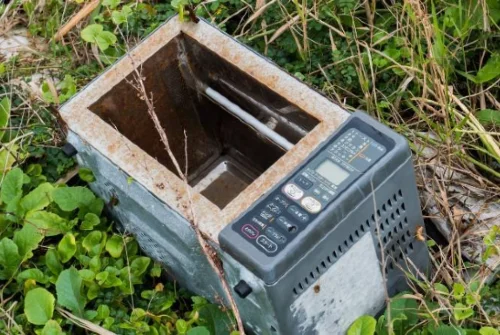
How to Recycle Your Old Microwave
Recycling your old microwave is straightforward and impactful. Here’s how to do it right:
- Find Your Nearest E-Waste Recycling Center: Start by searching online for “e-waste recycling center near me.” These centers specialize in handling electronic waste, including microwaves. They ensure that each component, from metals to plastics, is recycled properly, reducing environmental harm.
- Retailer Take-Back Programs: Many retailers, like Best Buy, offer programs that take back old electronics for recycling. Simply bring your old microwave to a participating store. Best Buy, for instance, has made it easy to recycle electronic equipment responsibly. Check the retailer’s website for specific details and possible restrictions.
- Local Government and Utility Company Programs: Some local governments and utility companies run recycling programs for household appliances, including microwaves. These programs may offer drop-off locations or even pick-up services. Visit your local government’s website or contact your utility company to find out what programs are available in your area.
Taking these steps not only ensures your old microwave doesn’t end up harming the environment but also supports recycling efforts that conserve resources and reduce the need for new raw materials. It’s a simple action with a big impact.
Donating or Selling Your Working Microwave
Before deciding to donate or sell your microwave, ensure it’s in good working condition. Check if it heats evenly, the turntable spins, and all buttons function correctly. A clean, fully functional microwave is ideal for donation or sale.
Donating Your Microwave
Goodwill, Habitat for Humanity Restore and Salvation Army
All great options for donating your microwave! These organizations accept working appliances to support their missions, providing essential goods to those in need or funding charitable projects. Donating not only gives your microwave a second life but also supports a good cause.
Homeless Shelters, Churches, and Domestic Abuse Shelters
These community pillars often accept donations of functional household items, including microwaves, to support individuals and families in need. Donating to these organizations can make a significant difference in the lives of those rebuilding their lives, providing them with essential tools for daily living. Contact local shelters, churches, and domestic abuse support centers to inquire about their donation processes and specific needs.
Selling Your Microwave
- Facebook Marketplace is, these days, the most popular go-to platform for selling used items, including microwaves. To sell here:
- Take clear, well-lit photos of your microwave from multiple angles.
- Write a concise, honest description. Mention the make, model, and any features or issues.
- Set a fair price. Check what similar microwaves are going for to price yours competitively.
- Be prepared to answer potential buyers’ questions promptly.
- eBay is great for selling used appliances, including microwaves, locally. Whether you auction your microwave or set a fixed price, just make sure to include that the item is available for local pickup only. You don’t want to be shipping a microwave!
- Craigslist is still used by thousands of people around you every day! List your used microwave for sale locally and you’ll have no shipping hassles.
- Facebook Marketplace is, these days, the most popular go-to platform for selling used items, including microwaves. To sell here:
By exploring these options, you not only increase the chance of finding a new home for your old microwave but also contribute positively to the environment and potentially your wallet.
Whether donating or selling, ensure your microwave is presentable and functional. This not only helps the new owner but also promotes sustainability by extending the appliance’s life.
Creative Upcycling Ideas for Old Microwaves
Upcycling your old microwave can turn it into something new and useful. Here are some creative, yet safe, ideas:
- Storage Unit: Transform your microwave into a quirky storage space. Perfect for stashing kitchen supplies, books, or crafting materials. Just ensure it’s clean and remove the electrical components first.
- Planter: An old microwave can become a unique planter. Drill some drainage holes in the bottom, fill it with soil, and plant your favorite flowers or herbs. It’s a great conversation starter for your garden or balcony.
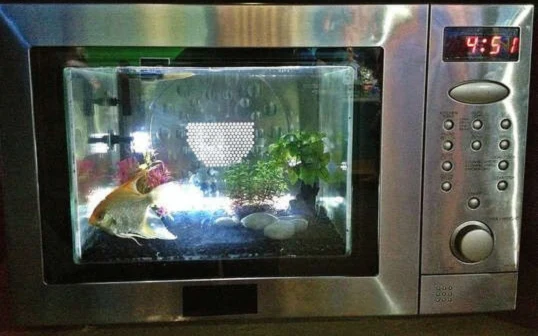
- Aquarium or Terrarium: Remove the top of the microwave, seal up the interior holes and door seam, and your old microwave is transformed into a unique aquarium. Or, for an easier upcycle project, remove the top and you have a terrarium!
- Furniture Conversion: With a bit of imagination, an old microwave can become a striking piece of furniture. After removing its electronic guts, you could transform the shell into a small, eccentric side table or a wall-mounted shelf. Just ensure it’s securely refurbished to handle the new weight it will carry.
- DIY Electronics Projects: For the tech-savvy, the components inside a microwave, such as the magnetron’s magnets and the transformer, are treasures for homemade projects. These parts can be repurposed for creating everything from science experiments to innovative gadgets. However, this requires technical knowledge and a respect for safety, especially when dealing with high-voltage components.
Repairing Instead of Replacing
Choosing to repair your old microwave instead of replacing it can be both cost-effective and environmentally friendly. If your microwave has minor issues, fixing it can extend its life, saving you money and reducing electronic waste. Here’s how to approach it:
When to Repair:
- If the repair cost is significantly lower than buying a new microwave, go for the fix.
- Small issues like a faulty door latch or a worn-out turntable motor are usually worth repairing.
Finding Repair Resources:
- Local Appliance Repair Shops: A quick online search for “local appliance repair shop near me” can lead you to professionals who can assess and fix your microwave. These shops often offer warranties on their work, giving you peace of mind.
- Online Tutorials: For the DIY enthusiast, platforms like YouTube have countless instructional videos on simple microwave repairs. Whether it’s replacing a fuse or fixing a panel, there’s likely a tutorial for it. For your safety, if you’re not familiar with repairing electronic appliances, it’s best to have a professional do any repairs.
Remember, repairing not only saves you money but also keeps your microwave out of the landfill a bit longer, making it a win-win for your wallet and the planet.
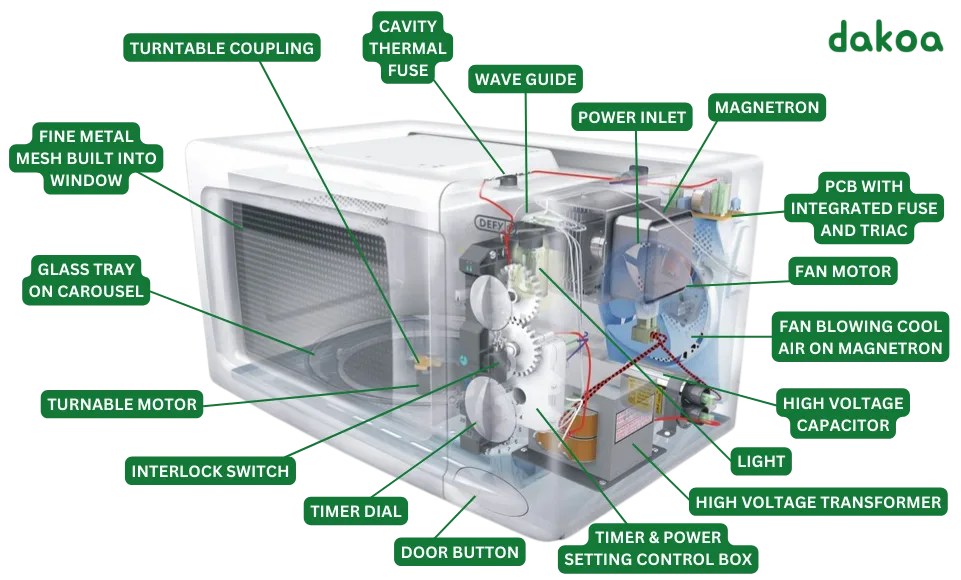
The Last Resort: Disposal
Landfill disposal of your old microwave should indeed be your last resort. Throwing it away contributes to the growing problem of electronic waste, which can release hazardous substances into the environment, harming soil and water quality.
Why Avoid Landfills:
- Microwaves in landfills can leak toxic substances, contributing to pollution.
- E-waste takes up valuable space in landfills, which are already overburdened.
Proper Disposal Methods:
- Check Local Regulations: Many areas have specific rules for disposing of electronic waste. A quick call to your local council or visit to their website can provide guidance on bulky waste collection and disposal regulations.
- Contact Local Garbage Collectors: Some areas offer special pickup services for electronic waste. Contact your local garbage collection service to inquire about disposal options. They might schedule a specific pickup or direct you to the nearest drop-off location for e-waste.
By choosing to dispose of your microwave responsibly, you’re playing a part in reducing environmental harm and supporting efforts to manage waste more sustainably.
FAQs on Microwave Disposal
- How much does it cost to recycle a microwave?
Recycling a microwave at an e-waste recycling center is often free, but some places may charge a small fee. It’s best to check with the nearest drop-off location in advance.
- Can I recycle specific parts of a microwave, like the magnetron?
Yes, parts like the magnetron can be recycled. Specialized e-waste recyclers can safely dismantle the microwave and recycle various components, including electrical waste and electronic equipment parts.
- What should I do if my microwave can’t be repaired or recycled?
If your microwave is beyond repair and can’t be accepted by recyclers, contact your local waste management authority to learn about hazardous waste disposal options. Some areas offer dedicated collection days or facilities for disposing of electronic and electrical appliances that contain hazardous materials.
- Is there a market for old microwave spare parts?
Yes, there’s a demand for spare parts. Online marketplaces, local appliance repair shops, and forums are good places to sell or donate parts like turntables, trays, and even specific microwave electrical components. This is a great way to ensure parts are reused rather than discarded.
- How do I find an e-waste drop-off location near me?
Search online for “e-waste recycling near me” or check the website of your local government for information on electronic recycling centers and e-waste drop-off locations. Retailers like Best Buy and Staples also offer recycling programs for small appliances and electronic devices.
- Can broken microwaves be donated?
Generally, donation centers and nonprofits prefer working appliances. However, some organizations and local repair shops might accept broken microwaves for training or repair and then donate them. Always check with the organization first.
- Are there any eco-friendly disposal services?
Yes, there are professional waste removal companies and junk removal services that specialize in eco-friendly disposal of old electronics, including microwaves. These services ensure that your appliance is recycled, donated, or disposed of in the most environmentally responsible way possible.
Remember, the right disposal method not only aids in waste reduction, but also in conserving resources and minimizing environmental impact. Always consider recycling, donating, or selling before resorting to disposal.
Conclusion & Your Opportunity To Be Sustainable For Us All
Disposing of your old microwave responsibly is more than just a task—it’s a commitment to environmental stewardship. As we’ve seen, microwaves are not mere kitchen appliances; they’re complex assemblies of metals, plastics, and electronic components that, if not handled properly, can significantly harm the environment. Choosing to recycle, donate, or upcycle not only prevents hazardous materials from polluting our planet but also conserves valuable resources.
Take a stand for our environment today. If you’re saying goodbye to an old microwave, choose the path of recycling, donating, or upcycling. Let’s all do our part in managing electronic waste by selecting the most eco-friendly disposal option. And don’t stop there – spread the word to friends and family.
Share what you’ve learned about the importance of responsible microwave disposal and how they, too, can contribute to a more sustainable future. Together, our small actions can lead to big changes in promoting environmental sustainability.







